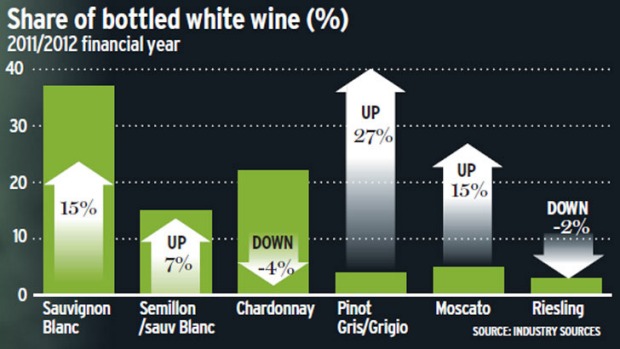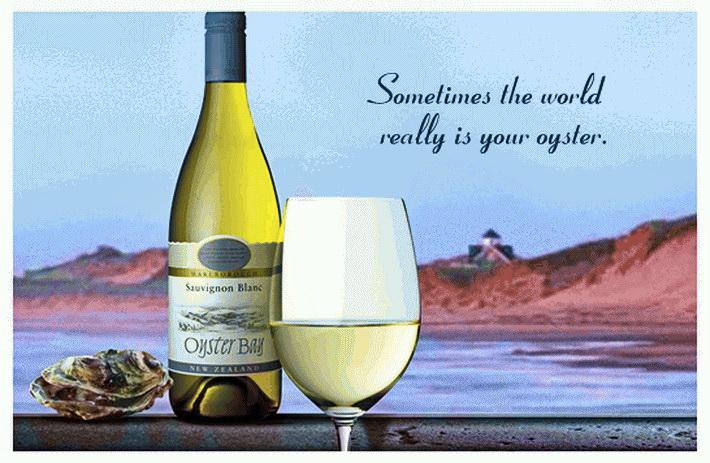Those who Rubbish Oyster Bay Sauvignon Blanc are Missing the Point
Oyster Bay savvy is still top of the pops in Australia, much to the dismay of our winemakers. Its enduring and illustrious reign reminds us of the All Blacks’ dominance in football. Serious wine people tend to shake their heads in disbelief or wring their hands in despair instead of learning some hard lessons. An old post from ‘an unashamed wine snob’ headed 11 reasons to avoid Oyster Bay sauvignon blanc is typical of the condescending attitude of most wine buffs toward those poor sods who drink this wine. ‘It’s fruity flavour tastes like Starburst with a bite of lemon acid afterwards,’ writes the author, and adds that it is ‘a stepping stone from alcopops and sweet cocktails to wine.’
Oyster Bay isn’t the problem in my view; the real issue is the many other interesting wines regular Oyster Bay drinkers are missing out on. I’d also argue that people need stepping stones as their tastes for wine evolve. In the fifties and early sixties, it was Barossa Pearl, Ben Ean Moselle and Mattheus Rosé, sweet concoctions that sold in vast numbers. Mostly to women. Men stuck to beer and the hard stuff in those days. Eventually women tired of these wines and looked for more interesting options. More here: The 1960s – from Pearl Wine to Chateau Cardboard.
Aussie Envy
The same thing hasn’t happened with Oyster Bay: five years on, it’s still the market leader of the Kiwi Savalanche. It’s called that because Sauvignon Blanc accounts for 40% of all white wine sales in Australia today, and more than 80% of all that savvy comes from the shaky isles – 17 out of the top 20 labels. ‘That gets right up the noses of local winemakers,’ wrote Rick Feneley in the SMH last year.
‘We lost 30 per cent of our sales of Cricket Pitch white,’ Ian Riggs tells Rick Feneley. ‘I’d say directly to New Zealand Sauvignon Blanc. The more people who drank it, the more you had to stay drinking it because all your friends were drinking it.’ Yes, our winemakers are bent out of shape and charge that Kiwi savvy is second rate grog. They call Oyster Bay the Big Mac of the wine world, and say it’s as ubiquitous, and just as ghastly.
Oh really?
Let me make one thing clear: if our winemakers had a wine that sold by the oil tanker load, they wouldn’t complain for a moment. They’d be beating their chests as Lindemans did when the company flogged millions of cases of its oak-chipped Bin 45 Chardonnay to the Yanks, or as Orlando did when Jacob’s Creek became the market leader in the UK. And let me ask a simple question: is Brokenwood’s Cricket Pitch such an exciting wine? Or St Hallet’s Poachers Blend, or Tyrrell’s Old Winery Semillon Sauvignon Blanc? Last time I checked, these wines were pretty awful and clearly made for the same Big Mac market.
Imitation – the sincerest form of flattery
Here’s what Huon Hooke said about the Cricket Pitch 2012: ‘Pale colour. Aromas of green capsicum, crisp and vegetal. Very light and bland with a faint twist of sweetness.’ Sound familiar? It’s simple, isn’t it? The Kiwis did a better job sussing out what the punters wanted, cranking it out in large volumes and marketing the hell out of it. Now our winemakers are on the back foot, crying foul.
Am I saying the Kiwis are champions? No, they’ve bastardised the Sauvignon Blanc style forever, as I showed in my piece Marlborough Men and the death of Sauvignon Blanc. What I’m saying is that Australian wine companies are no better: they’ve been flogging ghastly grog like Jacob’s Creek Chardonnay and Wyndhams Estate’s Bin 555 Shiraz for decades.
In Praise of Adventure
Our winemakers should define an Aussie style of savvy, and make it a winner. Something like the Semillon Sauvignon Blanc style of the Margaret River, with a touch of oak to add interest (like the Fumé Blanc style of the Loire). It would be a more herbaceous, more food-friendly, more satisfying kind of white. Less sweetness means it goes much better with seafood, so we should push the combo and encourage people to try it. Market it, in other words. Much better than whinging about the Kiwis.
Oyster bay drinkers can then step up to a more interesting style when they tire of their staple. It’s elementary: we should be educating consumers and gradually leading them to appreciate better examples of wine styles. Most of the Ben Ean drinkers of the early sixties ended up drinking more interesting wines. Wine is a journey of discovery, that’s what makes it so exciting. If you want to drink the same wine every week, that’s fine, but you’re missing out on the adventure of wine. Wine is a fascinating journey that never ends.
Huon Hooke makes the point well: ‘There are so many wonderful white wines to drink: why not be more adventurous, and occasionally drink a riesling, a chardonnay, a gewürztraminer and a gruner veltliner? It is truly sad that some worthy Australian wine styles have been ignored and left to languish because sauvignon blanc so dominates the market.’
That’s the real issue here. Most people like to discover exciting new things, that’s why we had the Chardonnay boom before savvy kicked it off its pedestal, and that’s why Pinot Gris is suddenly the hottest variety out there, followed by Moscato. Mind you, Sauvignon Blanc is still going strong. Here’s the most up-to-date graph I can find:
 Source: Australia still savvy about Kiwi white, SMH
Source: Australia still savvy about Kiwi white, SMH
In the end, people will drink what they like, and they love the Sauvignon Blanc style the Kiwis have made their own. The smart wine companies will build a bridge for savvy drinkers that will lead them to new discoveries, the dumb ones will milk the trend until the punters latch onto a new one. Then they’ll complain about the fickle market and customers who lack loyalty.
Kim

